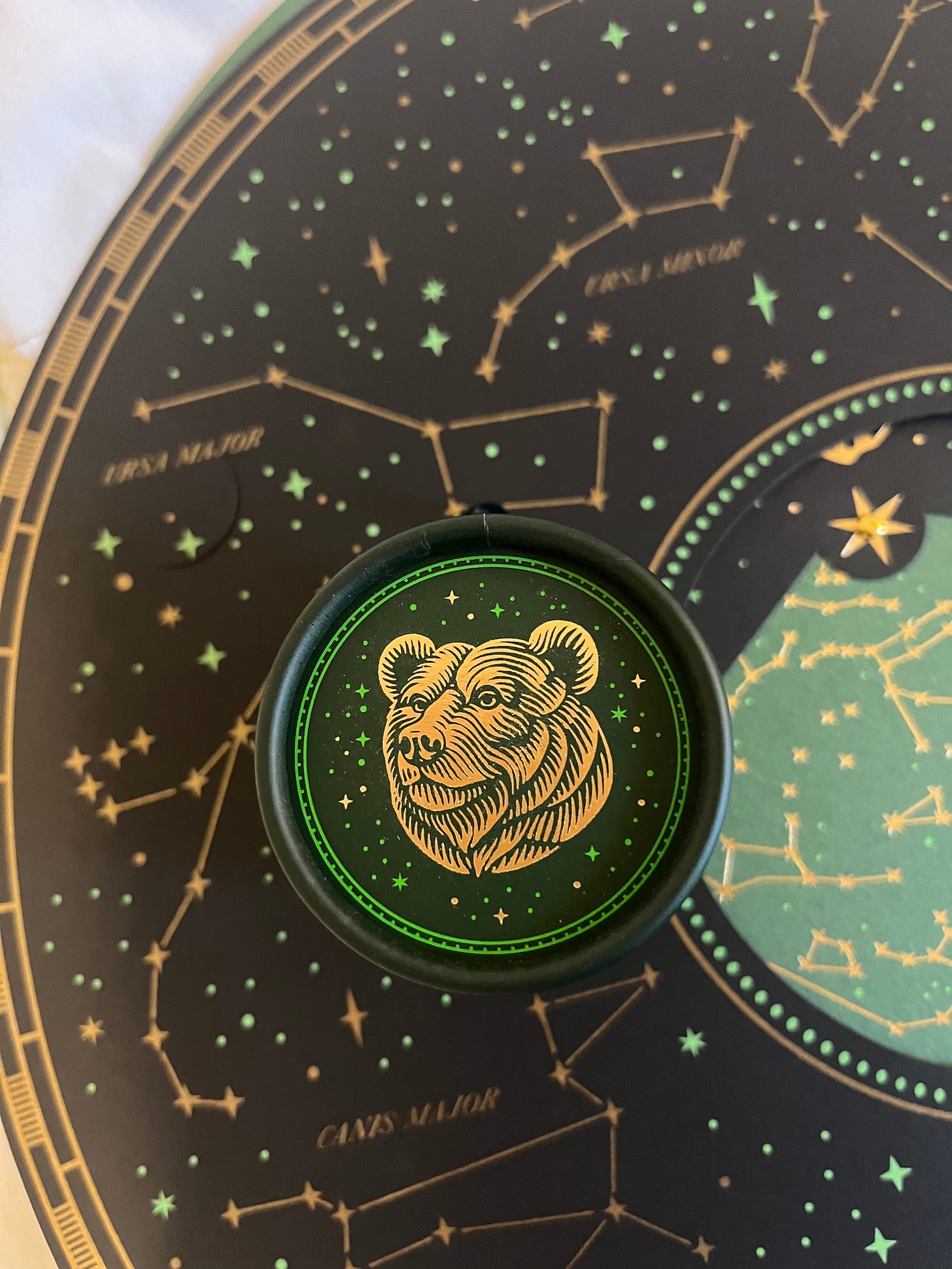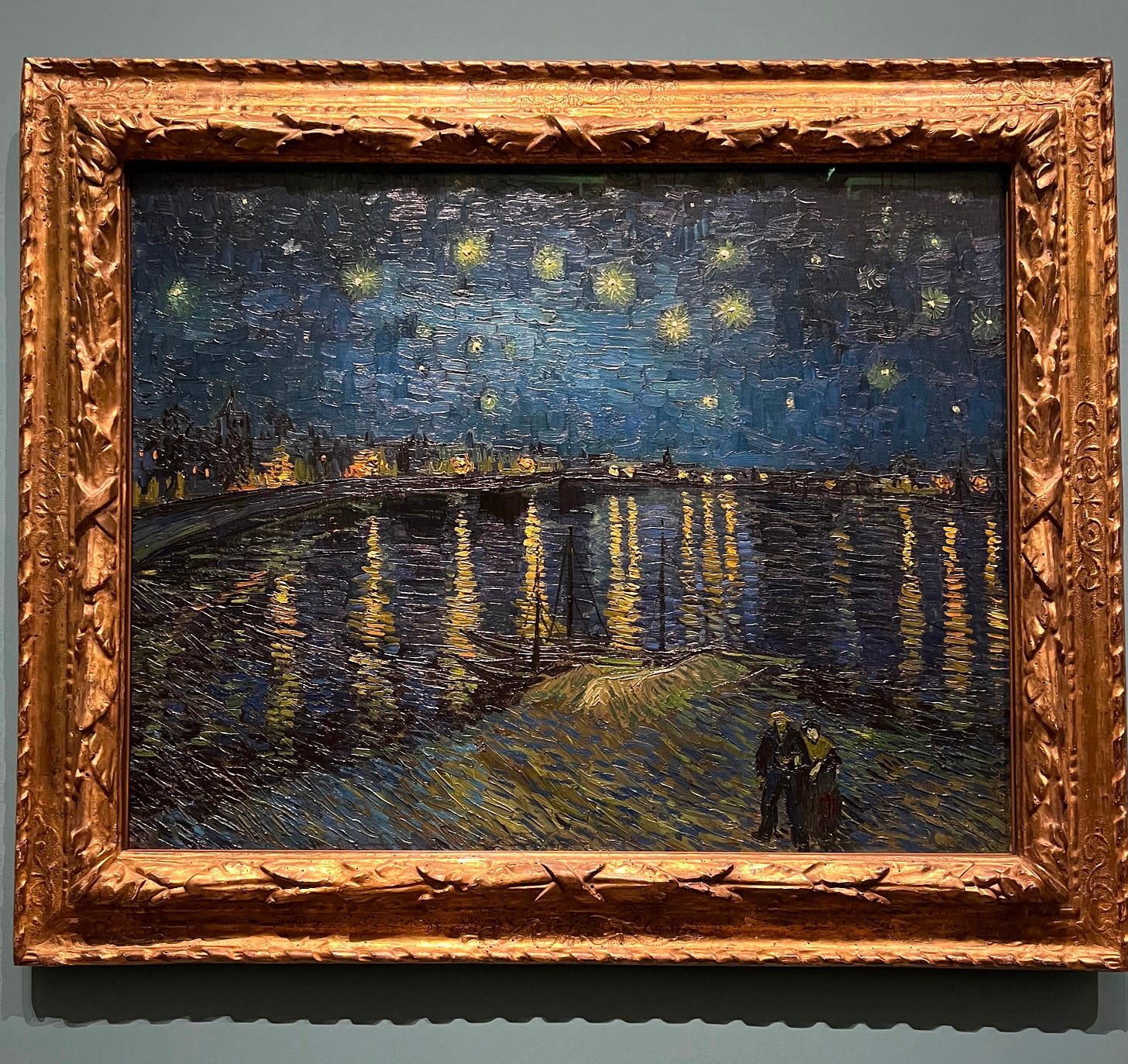
Ever since we first noticed that the darkness above our heads was full of unchanging dots of light, humans have ‘tamed’ the wilderness of the night sky by inventing constellations, thus ordering the starry chaos. Tonight’s constellation, and the asterism within it, shows this most succinctly. You probably know Ursa Major, the Great Bear, due to the familiar pattern of seven stars within the constellation making a distinct shape like a spoon or ladle in the sky. What you call these stars depends on where you are located, but it is fascinating to note some similarities regarding what we have seen in this asterism. It is made of the seven stars making up the bear’s tail (yes, this bear has a tail) and rump: Alkaid, Mizar, Alioth, Megrez, Phecda, Merak and Dubhe.
In the UK we call it the Plough of course, and one Chinese name for it is a winnowing shovel, another farming tool.
In other places, these stars represent a cooking utensil, such as in the US where it’s well known as the Big Dipper, a kind of ladle. The French call it La Casserole (the saucepan) and in Brazil, the Taulipang people call this group of stars a barbecue grill.
A common association with these stars is with a wagon. The Norse called it Thor’s wagon, in Germany it is the wagon of King Charlemagne (an old English name for it was the wagon of King Charles I or II), and in China a name for this group of stars is the processional carriage of the emperor, or the Northern Dipper. The wagon asterism within the Bear was also mentioned in the works of Homer, and may ultimately have its roots in Babylon.
In some Indigenous societies in what is now North America and the Caribbean, including the Seminole, Alabama and Carib people, this is not a wagon but instead a boat.
Harriet Tubman famously used this star pattern, known then as the Drinking Gourd, to help slaves in the southern US to escape to freedom along the Underground Railroad towards Canada. This is because this asterism is circumpolar, ie, it doesn’t set in the northern hemisphere, and can be used to locate the North Star, using the ‘pointer’ stars on the Dipper’s bowl, which point northwards to Polaris in Ursa Minor.
In ancient Egypt this was the constellation of the bull’s thigh, associated with the chaos god Set. A tool made of meteoric iron shaped like this constellation was used in ancient Egyptian funerals to ‘open the mouth’ of the mummy and confer immortality onto the deceased, and therefore grant them passage to the afterlife.
The Arabs also gave the Plough stars funerary associations, where it represented a hearse followed by mourners.
This asterism is so famous, it even features in a painting by Van Gogh entitled Starry Night on the Rhone, normally found in the Musée D’Orsay in Paris, but now touring in London’s National Gallery. This shows the stars of the Plough reflected in the river Rhone over Arles, at a time when light pollution was not a problem.
Want to test your eyesight, or your level of light pollution? Look closely at the second star on the handle of the Plough, called Mizar. Can you see a small star very close to it? This is Alcor, and being able to see this star was said to have used as an eye test either by the Romans or the Arabs, who called it the ‘horse and rider’. (The Pleiades are also said to have been used as a test of good vision in antiquity.)
Ursa Major, the Great Bear constellation in which the Plough can be found, is a very old pattern of stars that has represented an animal of some sort in many cultures. Some researchers theorise that the predominance of bear-related stories across far-apart continents associated with the constellation hints at a prehistoric origin myth, but we may never know for sure.

In Greek mythology the Great Bear represents the nymph Callisto, who lived a free and outdoorsy life in the woods hunting with the goddess Artemis, whom she served. But after Zeus seduced her, Artemis (or Hera, the wife of Zeus) turned her into a bear. Callisto gave birth to Zeus’s son Arcas (who was a human boy, not a bear cub), who was taken from his mother and raised by the King of Arcadia, his adoptive father. One day when Arcas was grown up and hunting in the woods, he came across a bear who, upon seeing him, started running towards the young prince. Little did he know that this was his mother, overcome with love for her son, but as she cried out, her motherly calls became fierce inhuman growls, causing Arcas to panic and fire an arrow at Callisto’s heart…before the gods intervened. Zeus transformed Arcas into a bear, and took both mother and son by the short and stubby tails and threw them round his head before launching them into the sky to become constellations, causing their tails to stretch in the process, and that is why the bear constellations have long tails! Other myths say that Arcas became another constellation, Bootes the Herdsman, located next to Ursa Major and said to be guarding her.
Here’s what I think (and this isn’t from ancient myth, just my own spin on it)…what if the transformation by Artemis, goddess of the wild, wasn’t so much a punishment but a transformation that unleashed Callisto’s true untamed side represented by a bear, and that she was hunted down because this wildness was so misunderstood by humans?
Intriguingly, some Native American peoples also saw a bear in these stars. One story from tribes living in the Appalachian mountains links the constellation’s movement with the seasons. The three stars that mark the ‘tail’ or handle of the Plough are three hunters in pursuit of the bear, and Alcor represents a cooking pot. When the hunters finally kill the bear at the end of summer, the animal slips from its lofty position in the sky, its blood drips down from the sky and covers the trees, and that is why the leaves turn red in autumn.
To those living in northern latitudes, grazing animals are represented in this constellation: many Siberian peoples see it as a stag or an elk, while another Siberian group, the Teleuts, saw a horse, whereas the Inuit saw in these stars the shape of a caribou.
To me, the constellation Ursa Major has two sides, depending on whether I go for the perspective of the great bear or the Plough/Big Dipper. Ursa Major as a whole represents the wild, untamed side of nature, to me she is the great wild mother of the northern skies, a primordial, protective and powerful presence. The Plough asterism within represents something more human, it represents inventions, useful tools and guidance. From the first ploughs and wagons that marked the dawn of agriculture to cooking tools to a means of finding direction, homing, and freedom, as well as a link to the realm of the hereafter. Forever circling the north and helping us find the way.
And if you’re one for festive reinterpretations of the sky, you could tell the kids that the Plough is the constellation of Santa’s sleigh, as it is close to the North Pole. Think of it as a seasonal twist on ancient tales of wagons in the sky. (The Inuit’s caribou constellation also brings in a link to reindeer!)
And yes, the lore of Ursa Major and the Plough stars is rich and varied enough with lore from all across the northern hemisphere, which means it’ll be saved for yet another series of posts. Maybe for spring, when the constellation is best seen.

Prompt:
Taking from the idea of an animal matriarch of the northern skies, tonight's prompt is: how can you nurture your inner wildness?
How do you feel becoming about more untamed, and how does it fit in with the civilised, domesticated side of life? Is there a clash, or can these two sides-the wild and the tame-be reconciled?




